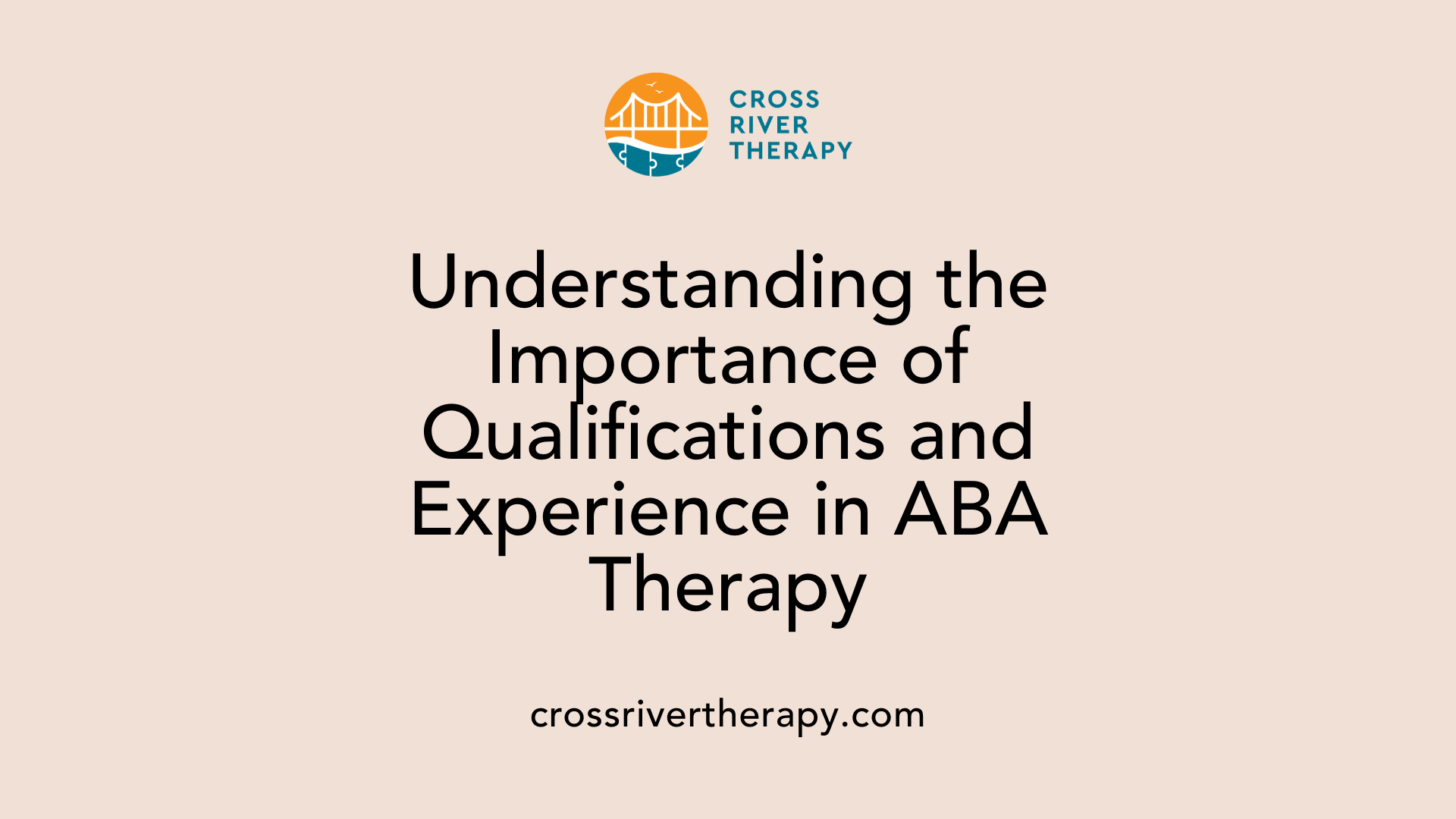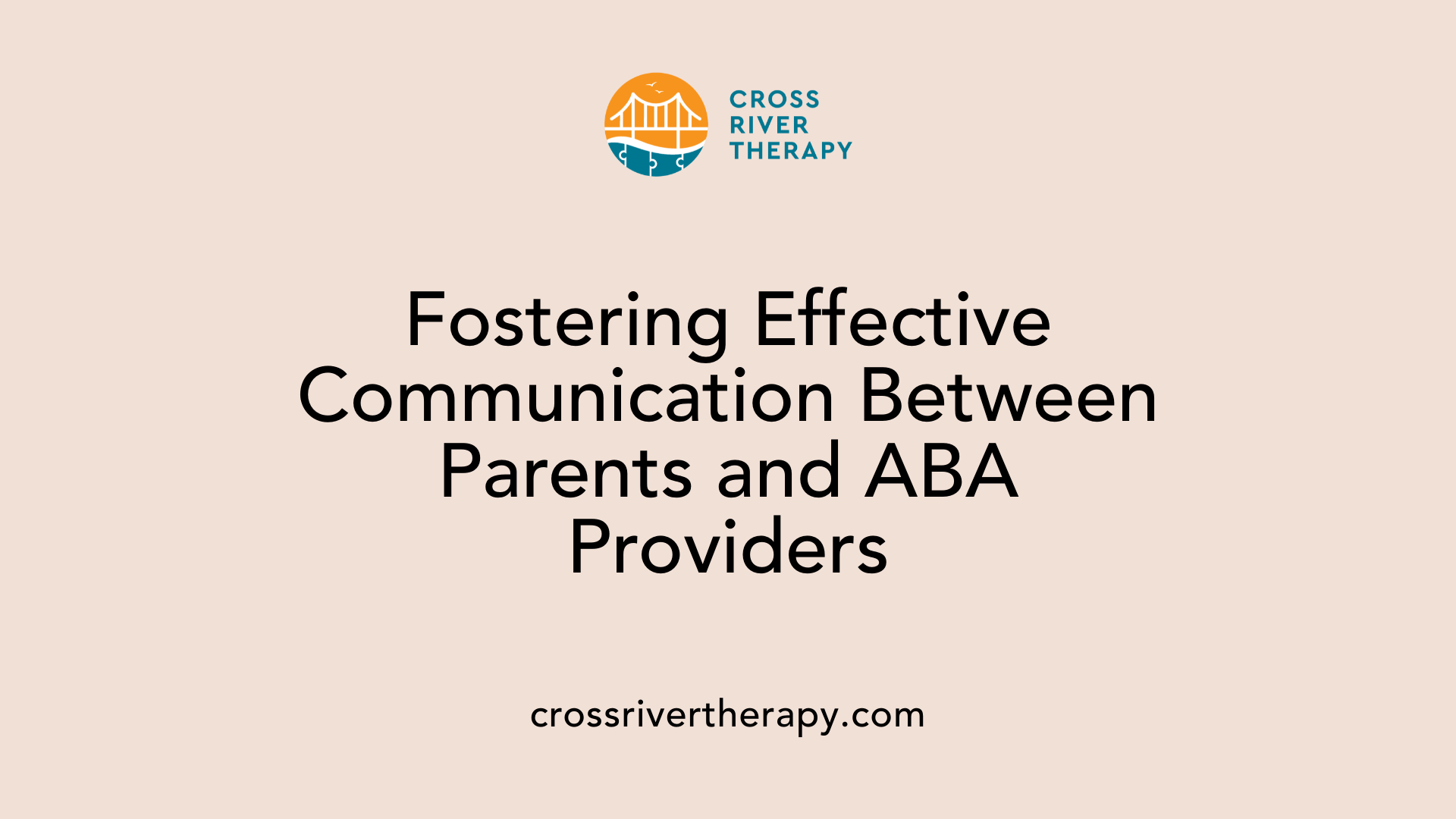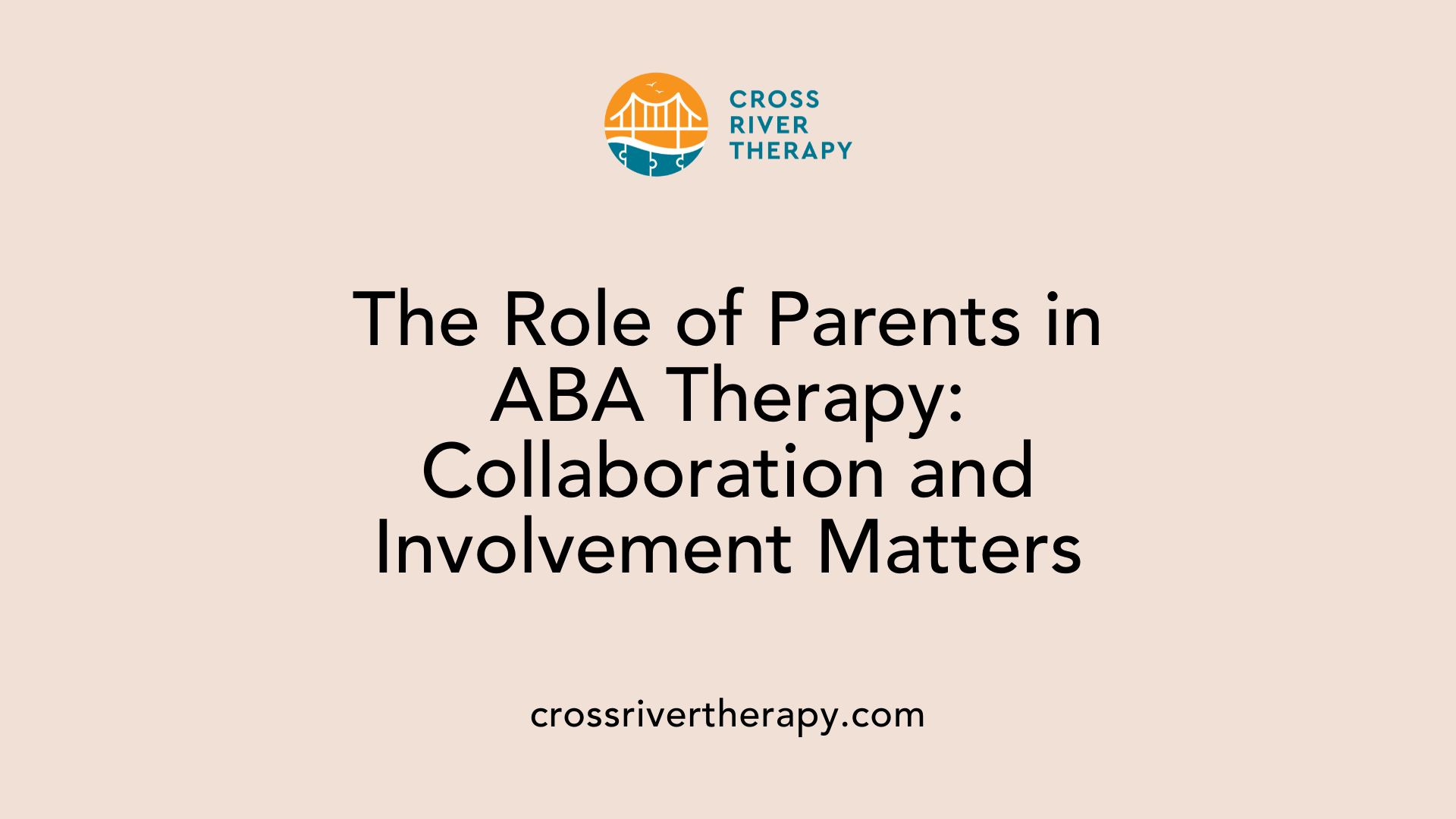What to Look for in an ABA Therapy Provider for Your Family
Choosing the Right ABA Therapy Provider: Essential Factors for Families
Understanding the Importance of Selecting the Best ABA Provider
Selecting the right Applied Behavior Analysis (ABA) therapy provider is a critical decision for families of children with autism. Effective ABA therapy can significantly reduce problematic behaviors and improve skills, but this requires careful consideration of several factors. Parents must evaluate provider qualifications, experience, methodologies, and their approach to family collaboration to ensure an optimal fit for their child's unique needs.
Evaluating ABA Providers: Key Considerations

How should parents choose an ABA therapy provider for their child with autism?
Parents should choose an ABA therapy provider for their child with autism by seeking programs that prioritize collaboration and parental involvement in treatment plans. It's essential to look for providers who employ Board Certified Behavior Analysts (BCBAs) and adhere to the guidelines set by the Behavior Analyst Certification Board (BACB). Evaluate the staff's training and experience, ensuring they specialize in the needs of children with autism spectrum disorder (ASD).
Inquire about the agency’s approach to behavior interventions, focusing on the use of positive reinforcement and ongoing data collection. Lastly, understand the costs involved and ensure open communication with the provider to facilitate effective support for your child.
What factors should be considered when evaluating ABA therapy providers?
When evaluating ABA therapy providers, it's crucial to consider the qualifications and experience of the therapists, particularly whether they hold the BCBA designation. Assess their approach to therapy, ensuring that it includes personalized treatment plans tailored to the child's specific needs, rather than a one-size-fits-all method.
Evaluate the level of parent involvement that the provider encourages, as active parental engagement is essential for the effectiveness of the therapy. It’s also important to observe therapy sessions to assess the therapist's communication skills, rapport with the child, and use of evidence-based practices.
Lastly, consider the provider's reputation, accreditation, and any testimonials from other families to gauge their reliability and quality of care.
| Factors to Consider | Details | Importance |
|---|---|---|
| Qualifications | Ensure providers are BCBA certified | Guarantees expertise and adherence to standards |
| Individualized Plans | Tailored treatment based on assessment | Effectively addresses unique challenges and goals |
| Parent Involvement | Providers should promote active parental roles | Enhances consistency and support during therapy |
| Observational Approach | Assess therapists' interaction during sessions | Determines rapport and application of evidence-based practices |
| Accreditation/Reputation | Look for affiliations like CASP or BHCOE | Indicates quality assurance and trustworthiness |
The Role of Therapist Qualifications and Experience

Why are therapist qualifications and experience important in selecting an ABA therapy provider?
Therapist qualifications and experience are crucial in selecting an ABA therapy provider because they ensure that programs are designed and implemented by trained professionals, specifically Board Certified Behavior Analysts (BCBAs). These experts create individualized treatment plans based on comprehensive assessments and regularly update them to meet each child's unique needs.
Qualified therapists conduct Functional Behavior Assessments (FBAs), using data to identify behavioral triggers and inform effective interventions. They also tailor strategies specific to each child's abilities and challenges, rather than adopting a one-size-fits-all model.
Moreover, experienced therapists employ evidence-based practices, ensuring that therapies used are scientifically validated. For instance, they utilize data collection to monitor progress and adapt strategies accordingly. This ongoing evaluation is essential for achieving meaningful outcomes in therapy.
What is the role of BCBA and RBT in ABA therapy?
In ABA therapy, the roles of BCBA and Registered Behavior Technicians (RBTs) are distinct yet complementary. BCBAs are responsible for assessing client needs, developing treatment plans, and supervising the overall implementation of therapy. They must possess a master's or PhD in a relevant field and pass a national certification exam, ensuring high academic and professional standards.
On the other hand, RBTs work directly with clients, implementing the treatment plans designed by BCBAs. While RBTs may not have the same level of formal education, they are trained and supervised by BCBAs, ensuring a consistent and effective therapeutic approach. This structured hierarchy allows for a collaborative team effort, enhancing the quality and effectiveness of ABA services.
| Role | Qualifications | Responsibilities |
|---|---|---|
| Board Certified Behavior Analyst (BCBA) | Master's or PhD, national certification | Develops treatment plans, conducts assessments |
| Registered Behavior Technician (RBT) | Trained under the supervision of a BCBA | Implements therapy plans, collects data |
Choosing ABA providers with qualified and experienced professionals can significantly influence the effectiveness of therapy for children with autism, leading to better skill development and improved behavioral outcomes.
Effective Communication Between Parents and Providers

How can parents and ABA therapy providers communicate effectively?
Effective communication between parents and ABA therapy providers plays a crucial role in the success of the intervention. To foster this, families should engage in regular meetings with providers, where they can discuss their child's progress and treatment adjustments. Understanding data collection methods used by providers will also empower parents to track their child's advancement effectively.
Parents have the right to observe therapy sessions, an opportunity that promotes transparency and allows them to step in if necessary. This engagement enables parents to see firsthand how strategies are implemented, which can help reinforce skills at home.
Moreover, maintaining open lines of communication with schools is important. Sharing strategies and treatment goals with educators can enhance the effectiveness of the ABA program, as it encourages consistency across different environments.
Parents should also familiarize themselves with their provider’s expertise and approach to autism spectrum disorder to ensure alignment with their child's specific needs.
The Importance of Parental Involvement
Involvement from parents is pivotal in tailoring ABA therapy to meet a child's unique requirements. Active participation not only reinforces learning in everyday settings but also contributes to goal setting in collaboration with providers. When parents closely engage in the therapy process, they can help maintain consistency and foster an environment supportive of skill generalization.
Understanding the Diversity of ABA Therapy Approaches
What different approaches and methods are used in ABA therapy?
There are several approaches and methods used in Applied Behavior Analysis (ABA) therapy, designed to enhance behaviors in individuals, particularly those with autism. The key dimensions of ABA ensure its effectiveness:
- Applied: Focuses on socially significant goals that improve quality of life.
- Behavioral: Emphasizes measurable and observable behaviors, ensuring therapists track progress objectively.
- Analytic: Decisions are based on data-driven research, allowing for informed modifications to treatment plans.
- Technological: Procedures are well-defined and easy to replicate, facilitating consistency in treatment.
- Conceptually Systematic: Techniques are grounded in behavior analysis principles, maintaining theoretical integrity.
- Effective: The strategies employed must lead to meaningful improvements in behavior.
- Generality: Skills learned in therapy should transfer to everyday situations, promoting independence.
How do these methods enhance therapy?
These diverse methods work in conjunction to create a robust framework for ABA therapy. By focusing on individualized needs, therapists can adapt these methods to suit different learning styles, ensuring that therapy is more effective. This person-centered approach enhances engagement, helping to foster a supportive environment where children can thrive.
Additionally, the use of evidence-based practices assures families that interventions are backed by research, guiding progress while involving parents in the process. Ultimately, the combination of these methods in ABA therapy leads to better outcomes and generalization of skills, transforming challenges into successes.
Parental Involvement and Collaboration in Therapy

What role does parent involvement and collaboration play in ABA therapy?
Parent involvement and collaboration are vital components of effective ABA therapy. Engaging parents early in the process establishes strong communication, ensuring that interventions are tailored to fit the unique needs of their child and the family’s desired outcomes. This collaborative approach not only informs therapy direction but also enhances consistency, allowing skills learned in therapy sessions to be reinforced in daily life.
The Importance of Collaboration
Collaboration among parents, providers, and educational staff fosters a supportive environment for children. Regular updates from therapists on progress and specific strategies enable families to feel empowered in their roles. Parents can share insights about their child that therapists may not observe during sessions, making it easier to adjust goals and techniques accordingly.
Parent Participation in Therapy
Active participation includes engaging in sessions, observing techniques, and understanding the data collection methods being used. Assessing progress through understandable metrics helps parents make informed decisions about their child's therapy and adjust their expectations realistically.
Empowering Families
Equipping families with a checklist for evaluating ABA programs can further assist in selecting providers that prioritize safety, quality, and alignment with their child's developmental goals. This encourages parents to advocate for their child's needs, ensuring a successful therapeutic experience.
Ensuring Provider Credentials and Understanding Insurance Coverage

Understanding the significance of accreditation
When selecting an ABA therapy provider, understanding their accreditation and reputation is crucial. Accreditation signifies that the provider adheres to stringent professional standards and best practices in therapy. This commitment often reflects the quality of care received by clients.
A reputable provider typically has experienced Board Certified Behavior Analysts (BCBAs) who personalize treatment plans to meet the specific needs of children. The compatibility between a therapist's expertise and a child's personality can play a critical role in achieving positive outcomes. Parents are encouraged to research credentials carefully, seek referrals from trusted sources, and evaluate the therapist's approach to ensure effective support in alignment with family values.
What should parents know about insurance coverage for ABA therapy services?
Parents should recognize that insurance coverage for ABA therapy can vary significantly. It is vital to thoroughly verify what treatments and services are included in their insurance policy. Ensuring that therapists are licensed, notably that they are Board Certified Behavior Analysts (BCBAs), is essential for receiving high-quality care.
Moreover, discussing the practice’s treatment philosophies with providers helps to ensure that their approaches align with the family’s beliefs regarding autism and behavior management. It is also advised to inquire about costs and billing practices upfront, as higher fees do not always equate to better services. Parents should prioritize seeking providers who emphasize quality indicators, such as consistent data collection methods, effective transition planning, and collaboration with educational institutions during the therapy process.
Final Thoughts on Selecting an ABA Therapy Provider
Finding the right ABA therapy provider is a pivotal step in supporting your child’s development and enhancing their quality of life. As you navigate this process, remember that the qualifications and experience of the provider, the methodologies employed, and the collaboration between families and therapists are all integral to successful outcomes. By asking the right questions and focusing on key criteria, parents can make informed decisions that align with their child’s needs and family values. Always prioritize open communication and thoroughly research potential providers to ensure a supportive and effective therapy experience.
References
- A Guide to Selecting an ABA Provider for Your Child
- 7 Things to Look for in a Quality ABA Provider - BHCOE
- What to Look For When Choosing an ABA Therapist
- Questions to ask an ABA therapist | Autism Speaks
- How to Identify a Quality ABA Provider - Acorn Health
- How do I Choose a Qualified ABA Therapy Provider?
- Tips for Choosing a Provider for Applied Behavior Analysis (ABA)
- What to Look for in an ABA Therapy Center - Apara



